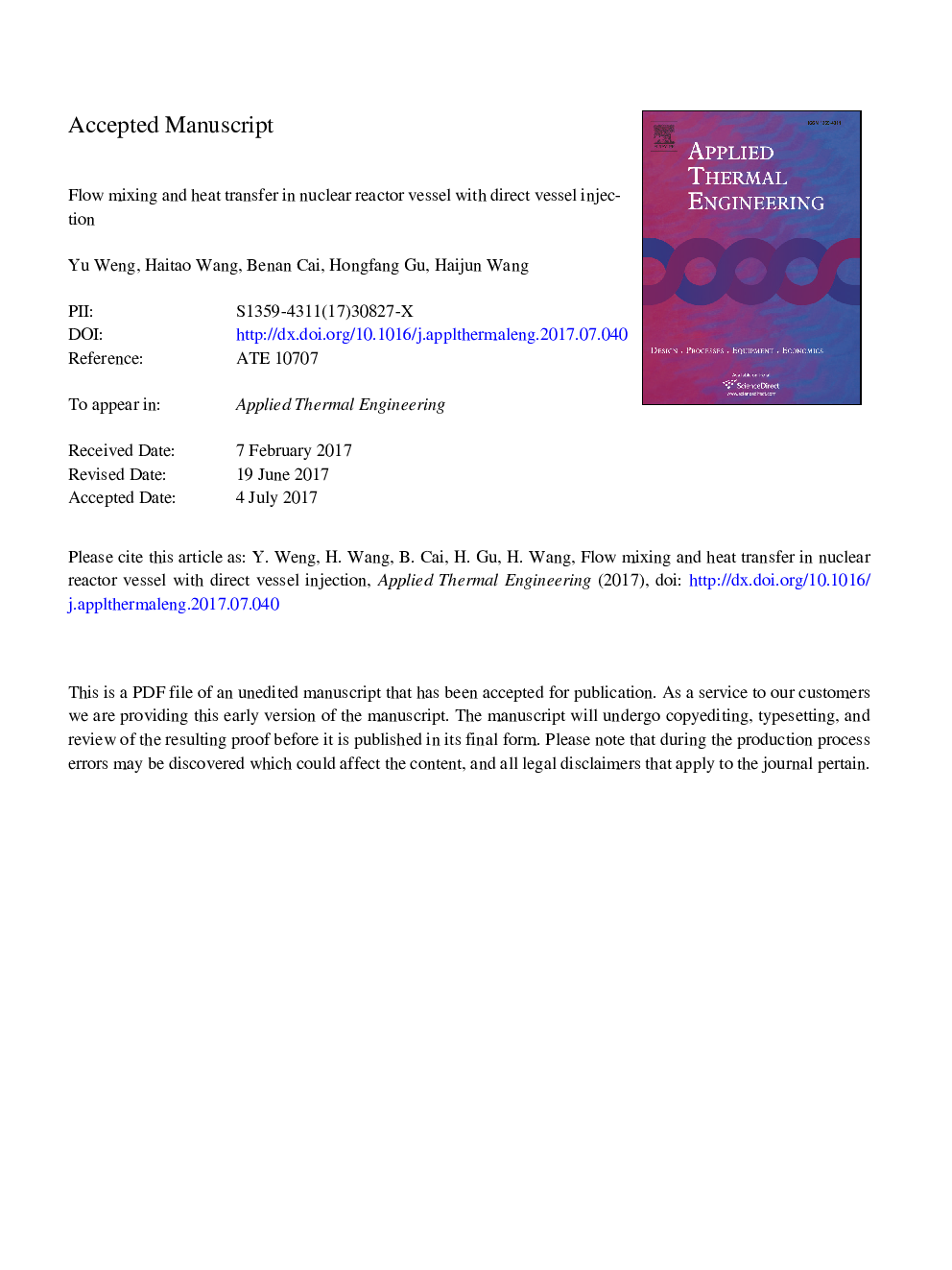| Article ID | Journal | Published Year | Pages | File Type |
|---|---|---|---|---|
| 4991214 | Applied Thermal Engineering | 2017 | 39 Pages |
Abstract
A 1400Â MW pressurized-water reactor has adopted a special direct vessel injection (DVI) structure for the emergency core cooling system. This design makes the flow mixing and heat transfer in the reactor vessel very complicated and is very different from the traditional structure. This study focused on flow mixing and heat transfer capability in the reactor vessel under different injection conditions. The computational fluid dynamics method and two reference experiments were used. The research presents a numerical way that can provide sufficient accuracy. The DVI deflector was proved to protect the reactor internals from direct scouring by cold injection liquid, as designed. A key area was identified on the reactor vessel surface, where the heat transfer quantity and temperature gradient were obviously higher. And the dimensionless temperature and heat transfer capability were obtained at the reactor vessel. Such data can be used in future real scale reactor design. The study complements the research in understanding the origins of thermal fatigue and pressurized thermal shock in the reactor vessel, and the ability to quantify them.
Related Topics
Physical Sciences and Engineering
Chemical Engineering
Fluid Flow and Transfer Processes
Authors
Yu Weng, Haitao Wang, Benan Cai, Hongfang Gu, Haijun Wang,
